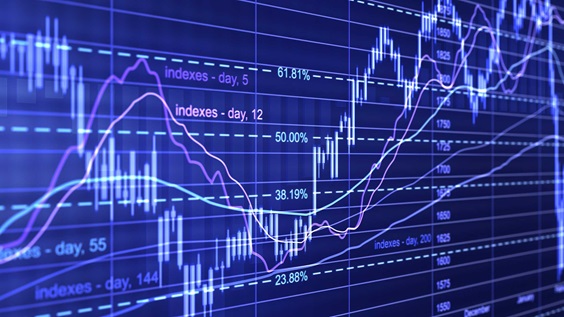Sustainability
Ukraine: one year on

Now a year old, the war in Ukraine is devastating for those involved. Further afield, it has woken the world up to key issues around energy dependency, food security and what it means to be “green”. What lessons have been learned over the past 12 months?
Key takeaways
- While physically the war in Ukraine puts conflict at the crossroads between Europe and Russia, its reverberations have been felt globally.
- The war has shown how the world depends on the region for crucial parts of the global supply chain – whether for energy, food or strategic metals and minerals.
- While the defence sector was previously classed as “socially harmful”, the war sparked questions about whether the social right to defend oneself could be reflected in sustainable funds.
- By raising questions about environmental, social and governance (ESG) approaches, the energy crisis that resulted from the conflict has helped focus minds on the transition to “green” and the regulation and investments needed to achieve it.
It is now a year since Russia launched a full-scale invasion of Ukraine, bringing war to Europe. The conflict continues to have an appalling human cost, and it has implications that reach far beyond the borders of Ukraine and Russia. International policy has shifted. More prosaically, global supply chains and just-in-time economies have been tested. Moreover, the war has challenged people’s commitments to sustainability and raised questions about what classifies as “sustainable”.
With these issues in mind, we have identified several lessons related to sustainability that have been learned from the war. In some cases, these are lessons that are still being learned.
Lesson one: accelerating affordable clean alternative energy sources
Lesson two: rewiring the global economy
To sustain these ambitions in clean energy, a fundamental rethink is required as to how we source key strategic metals and minerals. Russia is a major producer of base metals and the Economist Intelligence Unit estimates that countries representing over 77% of global gross domestic product (GDP) had imported significant quantities of at least one base metal from Russia or Ukraine in the past year.2
Clean energy is dependent on nickel, where Russia is the world’s largest producer, but geopolitical uncertainty has also highlighted China’s contribution to the supply of lithium and rare earth minerals.
The only way to sustainably meet the raw material demands of clean energy going forward is through the efficient recycling of electronic goods, or “e-waste”, whereby strategic metals and minerals can be extracted from these items and reused. According to The Earthbound Report, 7.6kg of e-waste is created every year per person on the planet.3
Lesson three: improving food security
Lesson four: defending what is defensible
The topic of capital allocation towards the defence sector came to the fore in March. The industry was previously viewed as “socially harmful” under the EU Social Taxonomy – a classification of economic activities that significantly contribute to social goals in the EU – but the war sparked questions about whether the social right to defend oneself could be reflected in sustainable-labelled funds.
While there is market consensus that controversial weapons should be excluded from investment portfolios, views are divided on providers of military equipment and services or nuclear weapons, whether the latter fall inside the Treaty on the Non-Proliferation of Nuclear Weapons (NPT) or not.
In response, Allianz Global Investors published a research paper that explored how and why exclusions had evolved and why we believe our stance on military equipment and services providers – whereby we set a threshold of 10% of revenues generated from these activities for companies included in sustainable-labelled funds – represents a pragmatic approach.5 We know this is an evolving topic and after much analysis we will look to further define our approach on this matter soon.
Lesson five: rethinking ESG
The energy crisis sparked by the conflict swiftly turned perceived notions of ESG investing into a political hot topic. The sustained underinvestment in the global energy infrastructure, especially in Europe, was blamed on ESG and an out-of-touch climate agenda that prioritised low costs over resilient supply. Even if much of this debate was driven by political agendas instead of substance, ESG had genuine questions to answer about how it was applied to investment decisions.
ESG qualitative scoring systems had become mainstream over the last decade, but disparate methodologies and scores from the main providers prompted much more robust frameworks from those with significant market influence. We recognise the demand for a modernised, robust non-financial risk framework that can inform all investment strategies. We expect risk screening to migrate from non-specific, aggregated E, S and G scores to focus on specific elements of idiosyncratic risk within E, S and G – eg, physical risk assessments, social controversies, water intensity and board composition. We have developed our own dedicated sustainability data architecture to capture the full breadth of ESG risk and opportunity assessment tools to meet evolving client and regulatory demands.
Lesson six: prioritising transition over “being green”
As well as testing the resilience of ESG, the events of last year challenged the markets to consider the transition to green instead of focusing solely on being green. Many column inches have been written on the failings of the new “green” regulatory approach for being out of touch with real-world decarbonisation and transition, as well as for being confusing.
A more globally inclusive approach to real-world impact and future economic resilience is needed. One possible cornerstone of this approach is the concept of transition – which involves a pathway, preferably ambitious, towards a specific goal of achieving a more resilient and sustainable economy or society. Formalising the contribution that both transition and robust engagement can play could work alongside green regulation to upscale the investments required.
Even a country as politically divided as the United States on climate change issues is embracing the notion of transition as a bedrock to its future economy. Perhaps partly as a reaction to events in faraway Ukraine, the Biden administration has successfully passed various pieces of legislation adding up to over USD 1 trillion that will, in aggregate, create a green grid and provide subsidies for green tech. This multi-year transformation will put pressure on other existing transition plans in the EU and China.6
We have learned many things from the shocking invasion that started on 24 February 2022. In terms of sustainable investing, the world of ESG is set to become more refined in its economic and political logic going forward as countries and economic blocks ensure that their energy security is more closely aligned with its climate ambitions.
1 https://www.iea.org/articles/energy-fact-sheet-why-does-russian-oil-and-gas-matter
2 https://www.eiu.com/n/russian-and-ukrainian-commodities-review-base-metals/#:~:text=Russia%20is%20a%20major%20producer,consumer%20goods%20and%20aerospace%20industries
3 The scale of global e-waste – The Earthbound Report
4 https://www.allianzgi.com/en/insights/outlook-and-commentary/the-crisis-on-our-plates
5 https://www.allianzgi.com/en/insights/outlook-and-commentary/defending-the-defensible
6 https://www.economist.com/leaders/2023/02/02/joe-bidens-effort-to-remake-the-economy-is-ambitious-risky-and-selfish
The Ukraine crisis and the related sanctions against the Russian Federation, the separatist regions of DNR and LNR, and Belarus are constantly evolving. The statements included herein are as of the date provided and are subject to change.
2792872







